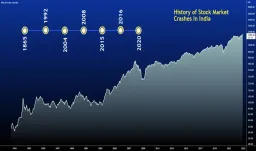What is Swing Trading? How does it work?

Swing trading is a method of investing in stocks or other securities with the goal of earning profits through short-term price changes. So how does swing trading work? In this article, we’ll walk you through the basics of swing trading, including how to find opportunities.
What is Swing Trading?
Swing trading is a type of short-term trading that can be used to trade a variety of financial instruments. In swing trading, positions are held for a period of days or weeks, and profits are made by taking advantage of price swings in the market.
It is a popular strategy for many traders as it offers the potential for quick profits while still allowing you to hold onto your position for a longer period of time than day trading.
One of the key benefits is that it can help to limit your exposure to risk. This is done by giving you more time to assess the market before making a trade.
If you’re interested in trying out swing trading, there are a few things you should keep in mind. First, because you’re holding onto your position for a longer period of time than day trading, it’s important to have a clear idea of your entry and exit points before making any trades. Second, always remember to use stop-loss orders to protect your capital. And finally, don’t get caught up in the excitement of the markets – stay disciplined and stick to your plan.
How does it work?
In Swing Trading, traders look for price patterns that can give them an indication of where the price is likely to move next. They then use this information to enter and exit trades in order to make a profit.
There are a number of different methods that can be used, but one of the most popular is called technical analysis. This involves looking at charts and prices to identify patterns that may indicate where the price is headed next. Technical analysis can be used to trade a variety of different timeframes. However, most swing traders prefer to trade on daily or weekly charts.
Another important aspect of swing trading is risk management. Because swings can occur over a very short period of time, it’s important to have a plan in place to protect your capital if the market moves against you. One way to do this is to use stop-loss orders, which will automatically close your position if the market moves against you by a certain amount.

How Does It Differ From Day Trading?
Swing trading is a type of trading that attempts to capture gains in a stock or other security over a period of days, rather than hours or minutes like day trading.
The key difference between swing trading and day trading is that with swing trading, positions are held overnight and for multiple days. In day trading generally refers to strategies where positions are closed out before the end of the day.
This longer time frame can allow for more comprehensive analysis and research on a potential trade idea. This can lead to more informed decision-making. Additionally, holding positions overnight can also provide the opportunity to capture intra-day price movements. That may not be possible to capture during shorter timeframes.
However, it also comes with its own risks. Since positions are held for longer periods of time, there is the potential for larger losses if the market moves against your position. Additionally, it can be more difficult to exit a losing trade when you are swing trading. This is because you may have to wait days or even weeks for the market to turn around.
Overall, swing trading is a strategy that can be used by both beginner and experienced investors alike.
What Are Some Indicators or Tools Used by Swing Traders?
Swing traders often use technical analysis to look for patterns in price data that might signal a future price move. Some popular indicators and tools used by swing traders include moving averages, Bollinger Bands, and Fibonacci retracements.
Swing traders also often use momentum indicators to identify when security is overbought or oversold. This can help them time their entries and exits more effectively. Popular momentum indicators include the Relative Strength Index (RSI) and the Stochastic oscillator.
Finally, many swing traders use candlestick charting to make decisions. Candlestick charts provide a more detailed picture of price action than other types of charts. These can be especially useful in spotting reversals.
What are the advantages of Swing Trading?
Swing trading is a popular style of trading for many investors because it has a number of advantages over other styles. It can help you capture larger profits than other types of trading. This is because you are holding your positions for longer periods of time and giving the market a chance to move in your favor.
Another advantage of it is that it can help to diversify your portfolio. If you only trade stocks, you are missing out on opportunities in other markets such as bonds, commodities, and currencies. By swing trading, you can get exposure to these other markets and potentially make more money.
Finally, it can be a great way to learn about the markets and how they work. By taking longer-term trades, you will have a better chance to see how the market moves and develops over time. This can be invaluable knowledge for any trader or investor.









